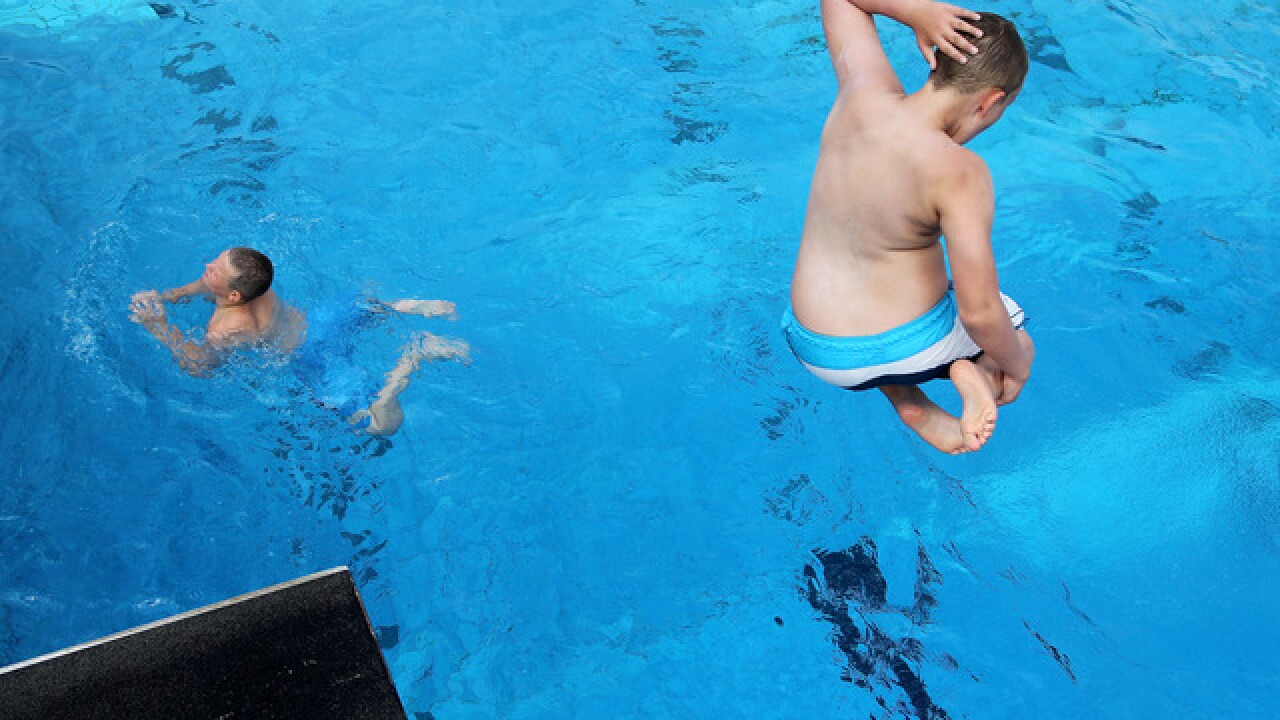Every year thousands of kids in the metro flock to pools or the lake, in order to beat the summer heat.
But every year, several kids end up in the emergency room for accidental drowning.
A Silent Killer
According to the Centers for Disease Control and Prevention, there was an average of 3,536 fatal unintentional drownings in the United States from 2005 to 2014-- about 10 deaths a day.
The CDC says drowning is the second leading cause of accidental death for children.
"It is very easy to drown in a pool, in a spa, bathtub, even a bucket of water," said Amy Terreros, program manager for Children's Mercy Hospital's Center for Childhood Safety.
Missouri Drownings by Location

Child drownings by location in Missouri in 2015. (Missouri Child Fatality Review Program 2015)
Kansas Drownings by Location

Drownings by location in Kansas from 2010- 2014. (Kansas State Child Death Review Board 2016)
And it can happen in seconds-- without a splash or a call for help.
"It is usually a very silent drowning or death," said Terreros. "Even an avid swimmer can drown."
Layers of Protection for Prevention
To prevent accidental drowning, experts say to use "layers of protection."
Supervision
- Always know where your child is
- Designate a 'water watcher' to actively watch children in the pool or water
- Make your child get permission before jumping in the water
- Do not use a floatation device as a substitute for supervision
"It's important to know how to swim. We have to be safe around the water. Water is everywhere," said Jaziel Sandoval, a swimming instructor at the YMCA in Kansas City, Kansas.
Swimming Lessons
- Never consider a child or adult to be 'drown-proof' because they had lessons
- Find instructors who are currently certified in CPR
- Take lessons year-round, do not just wait for the summer time
Students who take swimming lessons at the YMCA now learn to "grab and pull." Instead of jumping in the water to bring the person to safety, both kids and adults are taught to lay flat on the ground, outside the pool, and push a long object towards the person in need. Slowly, they pull them in.
Barriers For Swimming Pools
- Gates should be self-closing and self-latching, with latches at least 54 inches from the ground
- Fences should be at least 60 inches tall
Pool Alarms:
- Alert you to when someone or something disturbs surface of pool or removes cover
- Several options include: buoy alarms that float on water, alarms that attach on side of pool and alarms that go on pool gate
iSwimband:
- Wireless sensor that kids wear as a headband or bracelet
- Sensor pairs to a smartphone and alarm goes off on phone when someone is submerged for too long (based on customized settings)
SEAL SwimSafe:
- Standalone hub sounds an alarm and flashes lights if someone takes an unexpected dip or stays underneath the surface for unexpected time (based on customized settings).



